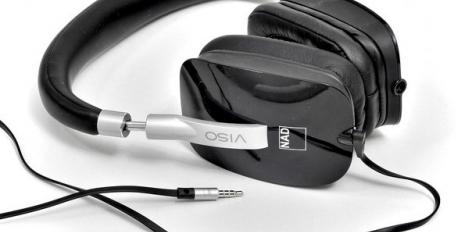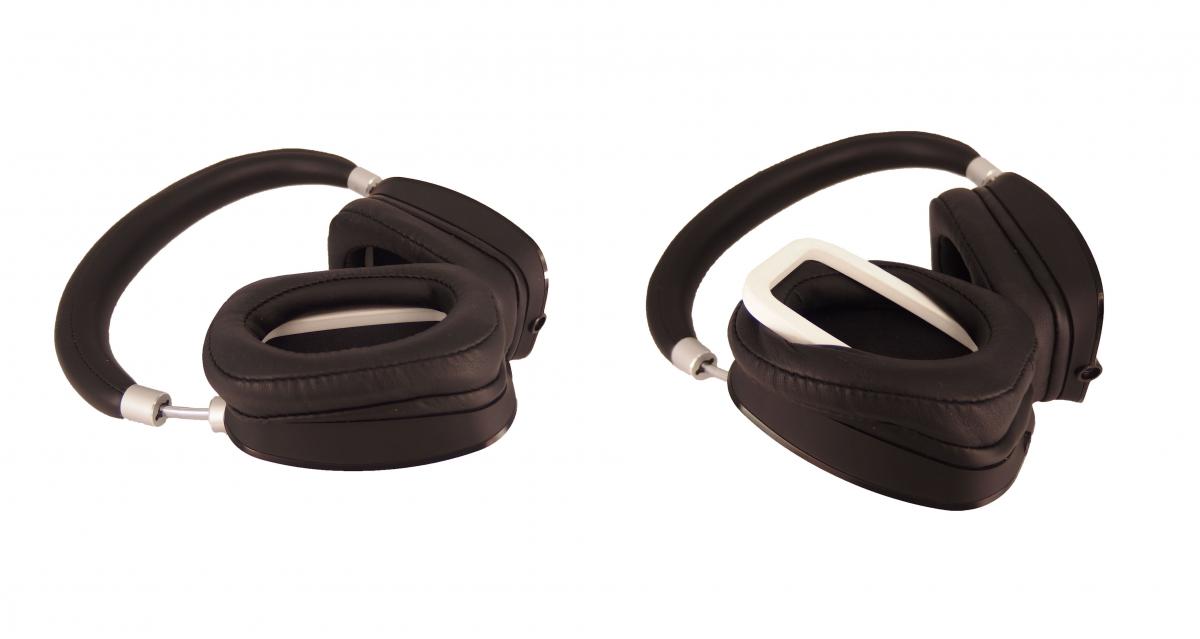
I was a little upset when I first noticed the small accumulation of scone dough, butter and jam on my Audio Technica M50 headphones. There’s something about the plastering of varying food condiments on $250 headphones that doesn’t float my boat. It seems these headphones are particularly enticing to Beyoncé blasting wives and sticky fingered toddlers who cannot fully appreciate the value of such items. I did however, see an opportunity in this travesty; a plausible excuse for a new set of phones! I didn’t complain.
I began by searching the net for a new set around the $250 mark, the same as my initial investment in the M50’s. After combing the review sites I was unable to find for the same price a better or even comparable set to the M50’s except for the now upgraded version, the M50x. Reviews were good so I ordered them. I had intended my next pair to be something different, aiming to gain some wider knowledge of the world of headphones, yet here I was ordering practically the same model.
My hopes were high, the stakes even higher. I had somewhat prematurely, challenged my co-worker to a sound-off with his Sennheiser HD598’s. Having since learned more on the subject of Sennheiser headphones, I believe this was a bad call. When they arrived two days later my confidence could not have been higher.
First impressions; too much bass, cramped soundstage, congested, blah. I was not happy. My hopes and expectations were destroyed. The sound-off was cancelled. I was officially a schmuck. I continued to let them burn in for a few more hours but by the end of the day I had had enough. I talked to the guys at Rubber Monkey and they agreed to let me return them. At least there was that.
So began round two of my search for the best value headphones.
Round two contenders:
The Shure’s were the next best thing. At $300 they were a little over my budget but apparently had better sound than the M50’s. I was one click away from ordering them when I made a last minute discovery during a price oriented product search on Pricespy; a single pair of Sennheiser Amperiors on sale for $360! The Amperiors are actually an upgraded version of the well-known and highly regarded HD25-1 II, a staple in the headphone market having been used by professional DJ’s since the late 80’s. What was exceptionally good about this deal was that the inferior HD25’s were $100 more expensive! This was obviously the deal of a life time and I jumped at the opportunity.
First impressions; better initial sound than the M50x’s but still congested compared to my original M50’s. After two hours burn in however they began to sound quite good and after a further two or three hours they began to absolutely demolish the M50’s. It’s astonishing how much effect burn-in actually has on a new set of headphones. The first time I used my M50’s I noticed I was hearing things in tracks that I had never heard before, the tracks were quite literally transformed. I got the same effect going from the M50’s to the Amperiors. The Amperiors were definitely next level.
That’s when the comfort issues began. The Amperiors are supra-aural, that is, the ear pads rest on your ears and not around them (circumaural). At first they weren’t so bad, I was too focused on the sound to notice the discomfort. However, when I began listening for periods any longer than two hours my ears began to scream out for relief. The Amperiors’ clamping force was simply too high. I tried to bend the plastic headband but the plastic used was so good that no matter how much I bent it I could not induce any permanent deformation. Why make a headphone that sounds so good so uncomfortable? I eventually made an addition that reduced the clamping force but even this did not fully solve the comfort issue. It seems supra-aural headphones are simply not compatible with my ears. After two weeks of baring the pain, I talked to the guys at PB Tech and managed to grease a refund out of them in exchange for a 20% restocking fee.
At this point I was beginning to think I was not very good at this whole desktop research thing. I realized however that in reality, headphone-forum-dwelling audiophiles are probably not the most reliable source of objective information. People it seems, are far more prone to talking about the positives of their purchases than the negatives. For my next purchase, I would revise my strategy, making a selection based on the negative reviews in addition to the positive. This way I expected to achieve a more objective result.
In the end, it came down to three products, all circumaural and all being at least $150 over my initial budget (please don’t tell my wife). After my brief foray with the Amperiors, I could and would not accept any headphone of lesser sound quality. I had well and truly caught the audio bug.
Round three contenders:
The NAD’s came out on top with the least amount of negative reviews and many more positive reviews. The Senn’s had comfort issues, the AKG’s had slightly inferior sound and the Mad Dogs were heavy and hard to drive. The worst I could find on the NAD’s was a potentially inferior build quality and a somewhat goofy appearance. These were in my opinion, the lesser of the four evils. The NAD’s were also the cheapest of the three at $400.
When the HP50’s arrived I was (unsurprisingly) a little disappointed by the sound quality, mostly due to the fact I had just paid $400 for them. The pre-burn sound quality was however the best so far (better than the Amperiors) so I was happy to give them a chance. After about 10 hours of burn-in, the strengths of these headphones started becoming apparent. Compared to the Amperior the sound character of the HP50 is very laid back. Natural and neutral sounding, individual instruments on the HP50 are well separated but not pronounced, kind of floating around, grabbing your attention from time to time, the wide soundstage really setting these headphones apart from the competition. The listening experience is completely different using the Amperiors. The Amperiors emphasize the upper bass/low mids which, while being very enjoyable in their own right, force you to focus more on the music to appreciate the overall soundstage. This can be a little fatiguing, especially in the environments where I mostly listen (office, car etc.). Additionally, the HP50’s dominate the Amperiors in comfort. I can easily wear the HP50’s for over two hours without any discomfort at all. Do they look goofy on my head? I suppose, but as I rarely use headphones in public, I can live with this. If you are looking for a comfortable and highly capable mid-high end headphone you can do no wrong with the NAD HP50.
Upon reflection of this enlightening and at times tiresome experience, I note three suggestions for anyone looking to delve into the rapidly growing headphone market. The first being that the sound improvement vs price ratio can be described as a rapidly descending curve. The second being that headphone burn-in can have a huge effect on sound quality, patience being after all a virtue. And the third, not to trust reviews and online dialogue alone. There is no better way to compare audio equipment than to physically listen to them and compare based on your own personal experience. Given the chance to do it over again I would visit a well-stocked audio store like the Computer Lounge in Auckland, heed their advice, listen to as many fully burned-in sets as possible and go from there. High end audio is one of those industries where the importance of qualitative research cannot be understated.
Update
Closed-back headphones: the modifications

Having used these headphones for the past two months and having clocked up over 100 hours of listening, I can provide a couple more impressions of the HP50’s worth mentioning. Unfortunately these developments are mostly negative, pertaining to the comfort and build quality though were ultimately resolved by some creative hacking on my part. My previous summary of the sound character of these headphones remains accurate enough but I will also further expand on this.
The build quality of these headphones was probably the most disliked and questioned aspect to the design, though not one instance of actual malfunction was reported. Well folks, that’s about to change. About a week into my glossy NAD experience I discovered some lateral/rotational movement between the headphone cups and the connecting aluminium armatures. This definitely did not feel right so after some careful consideration of the potential risk vs gain, I decided to pull them apart to see what was going on. What I discovered underneath that premium grand piano-esque exterior was mortifying, truly mortifying. What lies beneath are two small screws that fasten a small POM Acetal hinge component to the aluminium armatures, essentially coupling the headphone cups to the headband. All four of these screws (two on each side) were on the verge of falling out! Suffice to say, I promptly re-tightened them. The screws had no locking compound and were obviously inadequately torqued, a poor production design call I suspect. Had I not investigated and fixed this issue when I did, I am sure the connection would have eventually failed and lead to a pretty unhappy customer with half a headphone. You’re welcome NAD.
The second gripe was with the comfort. Initially, the HP50’s were excellent in this regard. However, after a couple weeks I noticed my ears touching the hard inside section of the headphone cups. It seemed the ear pads, while being extremely soft, were lacking some resiliency and became flatter over time. You probably think I’m just winging now but I assure you, wear anything on your ears for upwards of two hours at a time and even the smallest irritation will become annoying. Luckily, there was an easy fix for this. Having access to a 3D printer, I printed myself two 6 mm ABS plastic spacers that slid in nicely between the cup and ear pad, effectively spacing my ears a further 3-4 mm away from the driver. You’re still welcome NAD.
Finishing on a high note, with respect to the sound quality the NAD’s continue to impress. Having had the opportunity for further break-in and to be compared with several other headphones of similar cost, the NAD’s are still my favourite. Music with these headphones just sounds real. Instruments sound real. Vocals sound real. Bass punch is fantastic. All audio equipment is prone to excelling in particular genres and though the NAD’s give every genre a decent go, the standout genres in my opinion are classical, jazz, blues and rock. High intensity electronic music is where these headphones fail. They seem to lack the aggression that the Amperiors had (Amperiors loved this genre). Additionally, in an ideal world I would prefer a little more high-level attack, the treble feels just a little recessed.
All in all I’m still very happy with my HP50 headphones though I would advise caution to anyone not prepared to make the small modifications that I made.
I haven’t returned them yet, need I say more?
Comments
I bought Bose soundsport
Post new comment